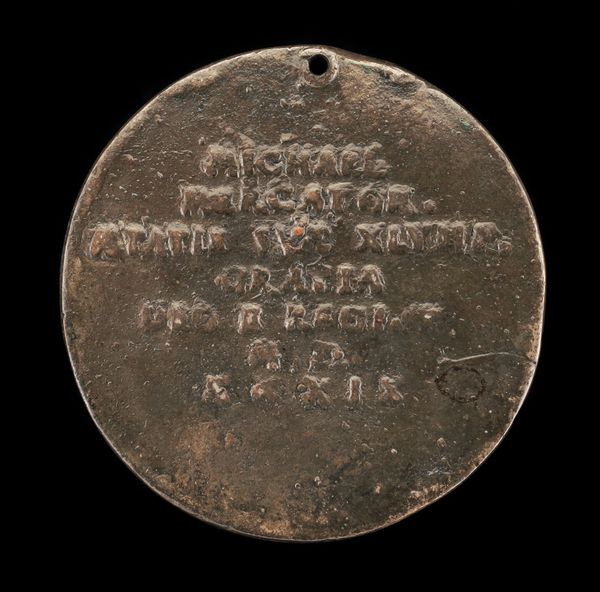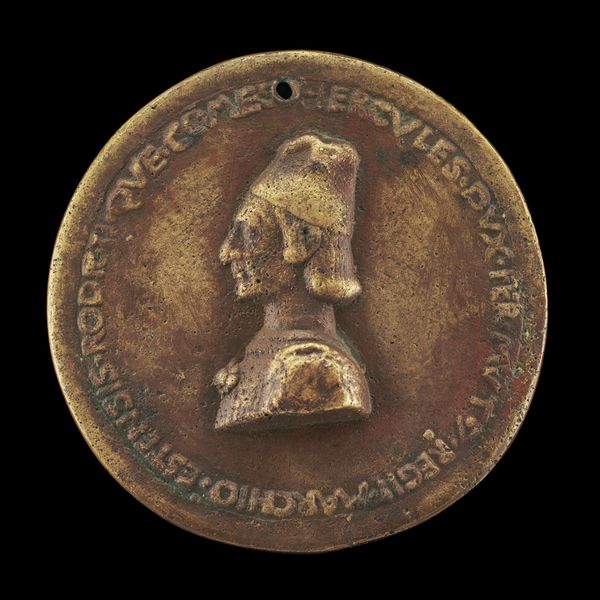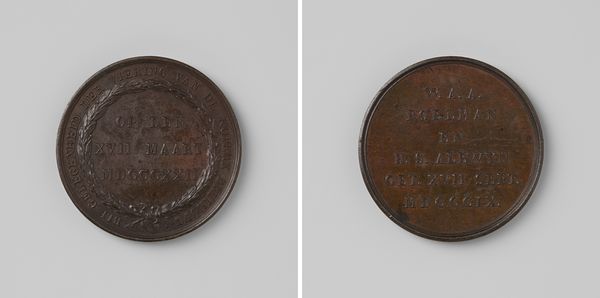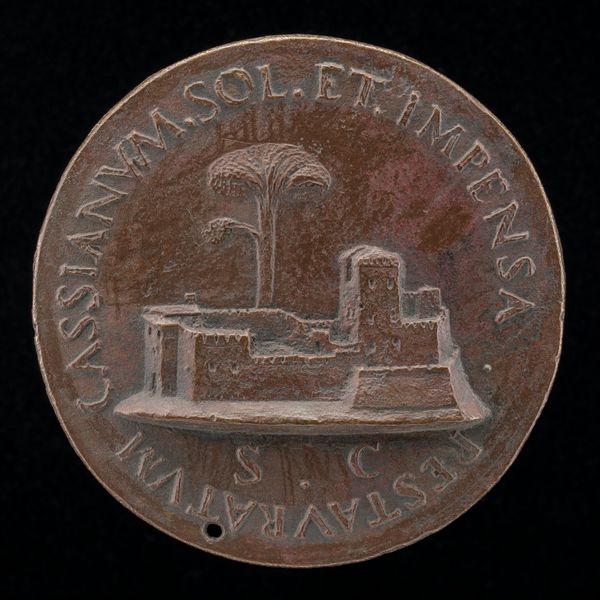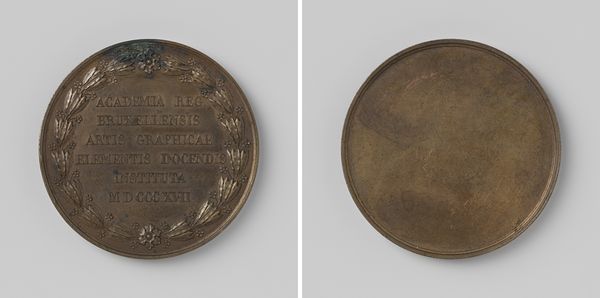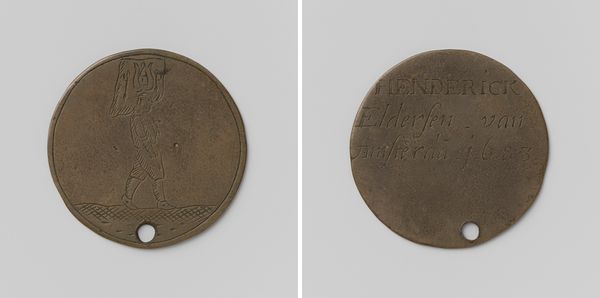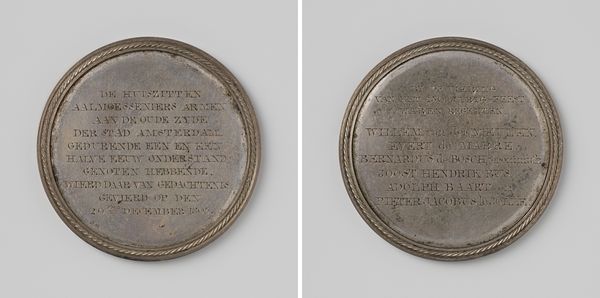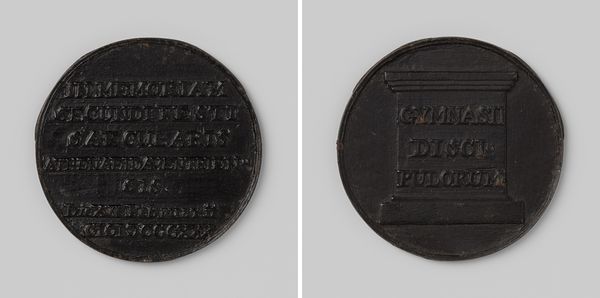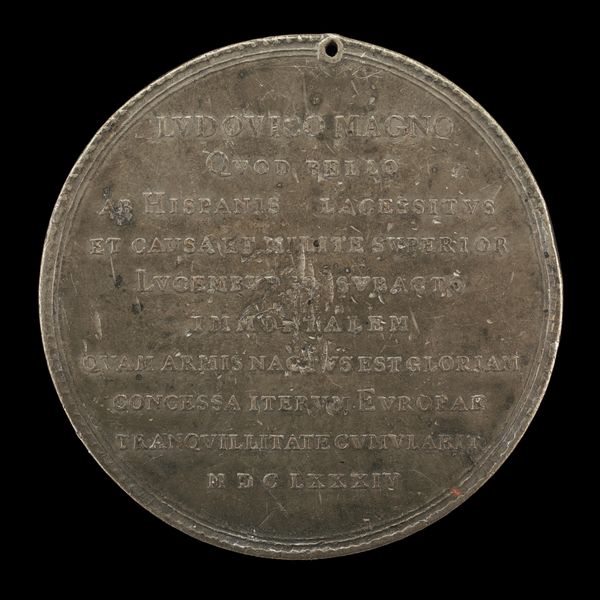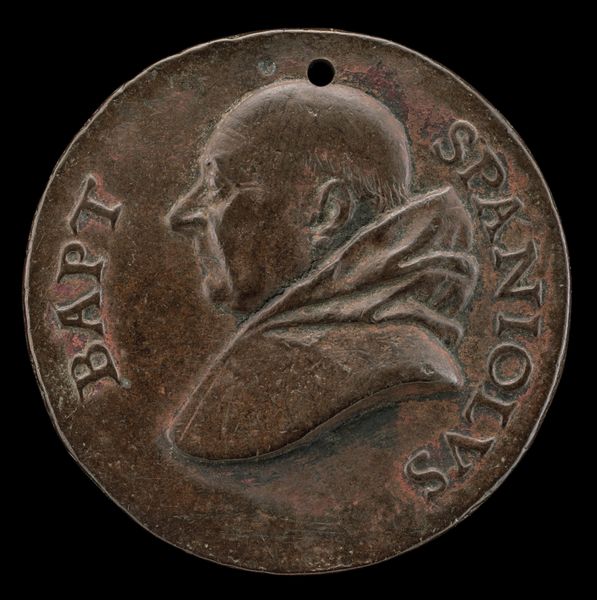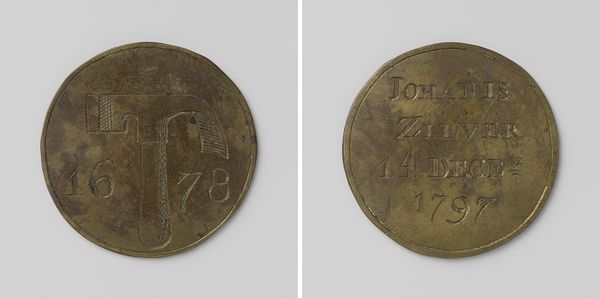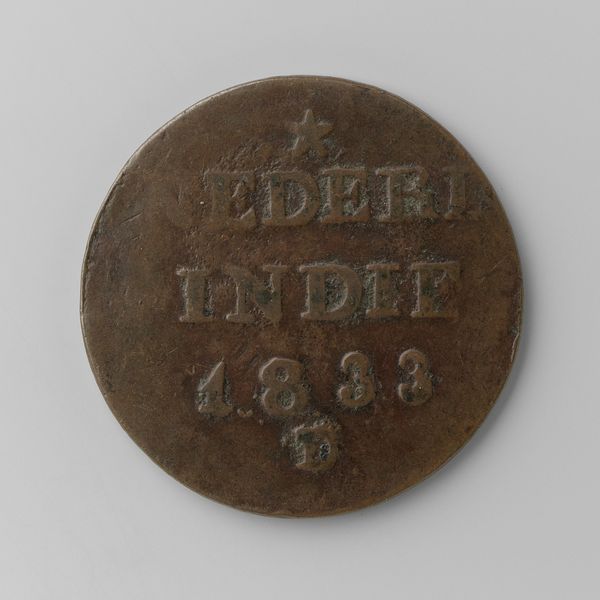![Inscription [reverse] by Friedrich Hagenauer](/_next/image?url=https%3A%2F%2Fd2w8kbdekdi1gv.cloudfront.net%2FeyJidWNrZXQiOiAiYXJ0ZXJhLWltYWdlcy1idWNrZXQiLCAia2V5IjogImFydHdvcmtzLzBkMTkxZjZiLTM3ZmQtNDE4OC05MTM0LWY4YjZhZjY2MDQyOS8wZDE5MWY2Yi0zN2ZkLTQxODgtOTEzNC1mOGI2YWY2NjA0MjlfZnVsbC5qcGciLCAiZWRpdHMiOiB7InJlc2l6ZSI6IHsid2lkdGgiOiAxOTIwLCAiaGVpZ2h0IjogMTkyMCwgImZpdCI6ICJpbnNpZGUifX19&w=3840&q=75)
metal, relief, sculpture, engraving
#
medal
#
metal
#
sculpture
#
relief
#
sculpting
#
ancient-mediterranean
#
sculpture
#
engraving
#
historical font
Dimensions: overall (diameter): 6.38 cm (2 1/2 in.) gross weight: 73.11 gr (0.161 lb.) axis: 6:00
Copyright: National Gallery of Art: CC0 1.0
Curator: This medal, "Inscription [reverse]," created by Friedrich Hagenauer, invites us to consider themes of representation and power through a subtly crafted object. Editor: It has a striking stillness. The material looks like tarnished silver, perhaps? The incised letters are so crisp against its aged surface, a really potent mix of textures and time. Curator: Exactly, the use of metal as a medium is significant here, typical for medals intended to commemorate individuals or events. We see how the very choice of metal, and its treatment, can influence the perceived value and status conveyed. The inscription itself tells a story, a kind of declaration of identity. Editor: What do you mean by ‘declaration of identity?' Curator: The text presented in the piece can be deciphered as a reversed inscription that has something to do with Louis, probably a King or someone important. Considering it was made by Friedrich Hagenauer who made lots of medals for prominent religious and political leaders of the time, we can suppose that this was supposed to express allegiance or record a key fact about Louis’ lineage and social standing. The inscription acts as a marker of history and power. It's a kind of political and social statement in portable form, don't you think? Editor: Definitely. And beyond its symbolic function, I'm fascinated by the process itself. The act of engraving into the metal, the skill required to render the letters with such precision, these speak to the labor and expertise embedded within this object. How it exists both as a functional object – a token – and a piece bearing aesthetic quality. I want to feel its weight, run my finger over those letters. Curator: I agree, to truly grasp it, we need to see the medal not merely as a static artifact, but to recognize it as evidence of an ideology materialized through material practice. This is what draws me into studying and admiring it. Editor: Seeing it that way, I can fully understand and see the intention of the piece: to serve as a constant and tactile reminder of Louis’ legacy.
Comments
No comments
Be the first to comment and join the conversation on the ultimate creative platform.
